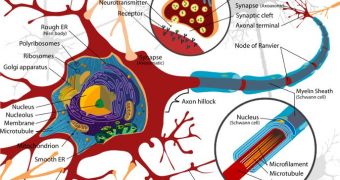Scientists at the University of California in Santa Cruz (UCSC) have recently determined that new connections appear in the brain of an animal as soon as the creature begins to learn a new task. The finding hints at the massive ability that the brain has of adapting itself to new stimuli and challenges, so as to offer the most suited and advanced response imaginable. This is especially true during motor learning, the science group writes in the latest issue of the respected scientific journal Nature.
During the new investigations, the team monitored the rewiring processes inside the brains of animals in intimate detail. The study was conducted on unsuspecting mice, which were trained to reach through a slot in a wall, in order to get a seed. While looking at the motor cortex, the region of the brain that is responsible with sending commands to muscles, the researchers noticed a massive synapse formation as the mice were learning the new task. Synapses are the connections that form between nerve cells known as neurons and facilitate the transmission of electrical impulses between neural pathways.
“We found very quick and robust synapse formation almost immediately, within one hour of the start of training,” UCSC Assistant Professor of Molecular, Cell and Developmental Biology Yi Zuo explains. Most importantly, he adds, the research group observed the appearance of structures known as “dendritic spines” in the motor cortex. These spines were also noticed to be forming a large number of new connections with other nerve cells as well, in addition to the pyramidal neurons that could usually be found in the motor cortex, e! Science News reports.
“It's a remodeling process in which the synapses that form during learning become consolidated, while other synapses are lost. Motor learning makes a permanent mark in the brain. When you learn to ride a bicycle, once the motor memory is formed, you don't forget. The same is true when a mouse learns a new motor skill; the animal learns how to do it and never forgets. We initiated the motor learning studies to understand the process that takes place after a stroke, when patients have to relearn how to do certain things. We want to find out if there are things we can do to speed up the recovery process,” Zuo adds.

 14 DAY TRIAL //
14 DAY TRIAL //